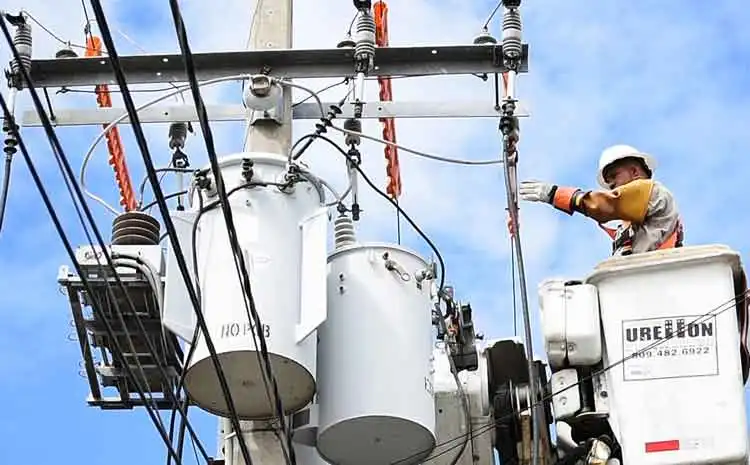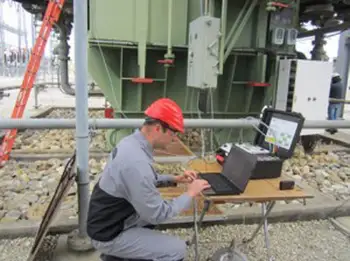Transformer Components Explained
By R.W. Hurst, Editor

Substation Maintenance Training
Our customized live online or in‑person group training can be delivered to your staff at your location.

- Live Online
- 12 hours Instructor-led
- Group Training Available
Download Our OSHA 3075 Fact Sheet – Understanding Electrical Hazards in the Workplace

- Learn the effects of electric current on the human body
- Understand OSHA safety standards and protective devices
- Discover essential lockout/tagout and grounding practices
Transformer components, including cores, windings, bushings, and insulation systems, enable voltage conversion, enhance energy efficiency, and ensure safe operation. They support electrical networks, substations, and industrial systems with reliability and durability.
What are Transformer Components?
Transformer components are the essential parts—such as the core, windings, insulation, tap changers, and bushings—that ensure safe voltage regulation, energy transfer, and long-term durability in electrical systems. Together, they:
✅ Provide voltage conversion and energy efficiency
✅ Ensure insulation, safety, and system reliability
✅ Support power distribution, substations, and utilities
Primary Components and Structure
The main transformer components include the core, windings, insulating oil, tap changer, cooling system, and safety devices. At its most fundamental level, a transformer consists of two windings—primary and secondary—wound around a magnetic core.
-
Primary winding: Connected to the input voltage source, it generates a magnetic field when current flows.
-
Secondary winding: Connected to the output load, it receives magnetic flux and induces voltage, transferring electrical energy to the output circuit.
These windings, made of copper or aluminum, are carefully wound on a laminated silicon steel core to minimize energy losses. Understanding utility transformers provides insight into how transformer components function within power distribution networks.
Core, Windings, and Insulation
The core provides the path for magnetic flux to flow. Constructed from laminated silicon steel, it reduces energy losses and improves efficiency. The primary and secondary windings are essential for electromagnetic induction, with one receiving input voltage and the other delivering output. Surrounding these windings is insulating oil, also known as mineral oil, which serves as both insulation and a coolant to absorb the heat generated during operation. Essential transformer insulation systems protect windings, oil, and bushings, ensuring durability and safe operation under varying conditions.
Sign Up for Electricity Forum’s Utility Transformers Newsletter
Stay informed with our FREE Utility Transformers Newsletter — get the latest news, breakthrough technologies, and expert insights, delivered straight to your inbox.
Tap Changer Function
The tap changer adjusts the transformer’s voltage ratio to regulate output voltage under varying load conditions. Load tap changers (LTC) are especially important, as they can compensate for fluctuations in input voltage or load demand, ensuring stable and efficient performance. Regular checks, such as maintenance inspection windows on transformers, help identify wear in critical components before failures occur.
Transformer Cooling Systems
Because transformers generate heat during operation, cooling systems are critical. Smaller transformers often use natural air cooling, while larger units employ forced air or liquid cooling. In liquid-filled transformers, insulating oil acts as both coolant and insulator. Cooling tubes, radiators, and fans circulate and dissipate heat, while the silica gel breather removes moisture from incoming air. This maintains stable temperatures, protects components from overheating, and extends operational life. Learning about distribution transformers shows how key components are optimized to deliver safe and reliable power to end users.
Safety Devices in Transformers
Transformers are equipped with several safety devices to prevent damage and ensure reliable performance:
-
Pressure Relief Device (PRD): Releases excess pressure inside the tank to prevent explosions.
-
Buchholz Relay: Detects gas accumulation or sudden pressure changes, indicating faults, and triggers alarms or shutdowns.
-
Oil and Winding Temperature Gauges: Monitor heat levels, alerting operators to potential overheating issues.
Conservator Tank Role
The conservator tank maintains the insulating oil level in liquid-filled transformers. It accommodates oil expansion and contraction caused by temperature changes, ensuring a constant level and preventing air or moisture from entering. A silica gel breather absorbs moisture from incoming air, protecting the oil from contamination and preserving insulation and cooling performance.
Transformers are complex devices composed of interconnected transformer components that work together to transfer electrical energy safely and efficiently. The core, windings, insulating oil, tap changer, cooling system, safety devices, and conservator tank each play a vital role. Understanding these elements and their functions ensures reliable transformer performance in electrical power systems.
Frequently Asked Questions
What are the main components of a transformer?
The main components include the core, primary and secondary windings, insulating oil, tap changer, cooling system, safety devices, and conservator tank. Each part plays a role in voltage regulation, insulation, and safe operation.
Why is the transformer core important?
The core provides a path for magnetic flux and is usually made from laminated silicon steel to minimize energy losses. It ensures efficient energy transfer between the windings. A closer examination of transformer core design reveals how laminated steel reduces losses and facilitates effective energy transfer.
What does a tap changer do in a transformer?
A tap changer adjusts the voltage ratio of the transformer. By adjusting the number of winding turns, the output voltage under varying load conditions, thereby maintaining stability.
How do transformer cooling systems work?
Cooling systems prevent overheating by circulating air or insulating oil. Larger transformers often use radiators, fans, or cooling tubes, while silica gel breathers remove moisture from incoming air. Exploring transformer oil use illustrates how it functions as both a coolant and an insulator within the transformer system.
What safety devices protect transformers?
Common safety devices include pressure relief devices (PRD), Buchholz relays, and oil and winding temperature gauges. These protect against internal faults, overheating, and excessive pressure.
What is the purpose of a conservator tank?
The conservator tank maintains insulating oil levels by accommodating the expansion and contraction that occur due to temperature changes. It also prevents air and moisture from entering, thanks to the use of a silica gel breather.








